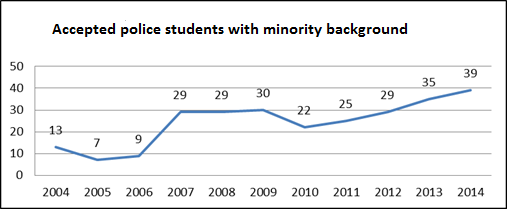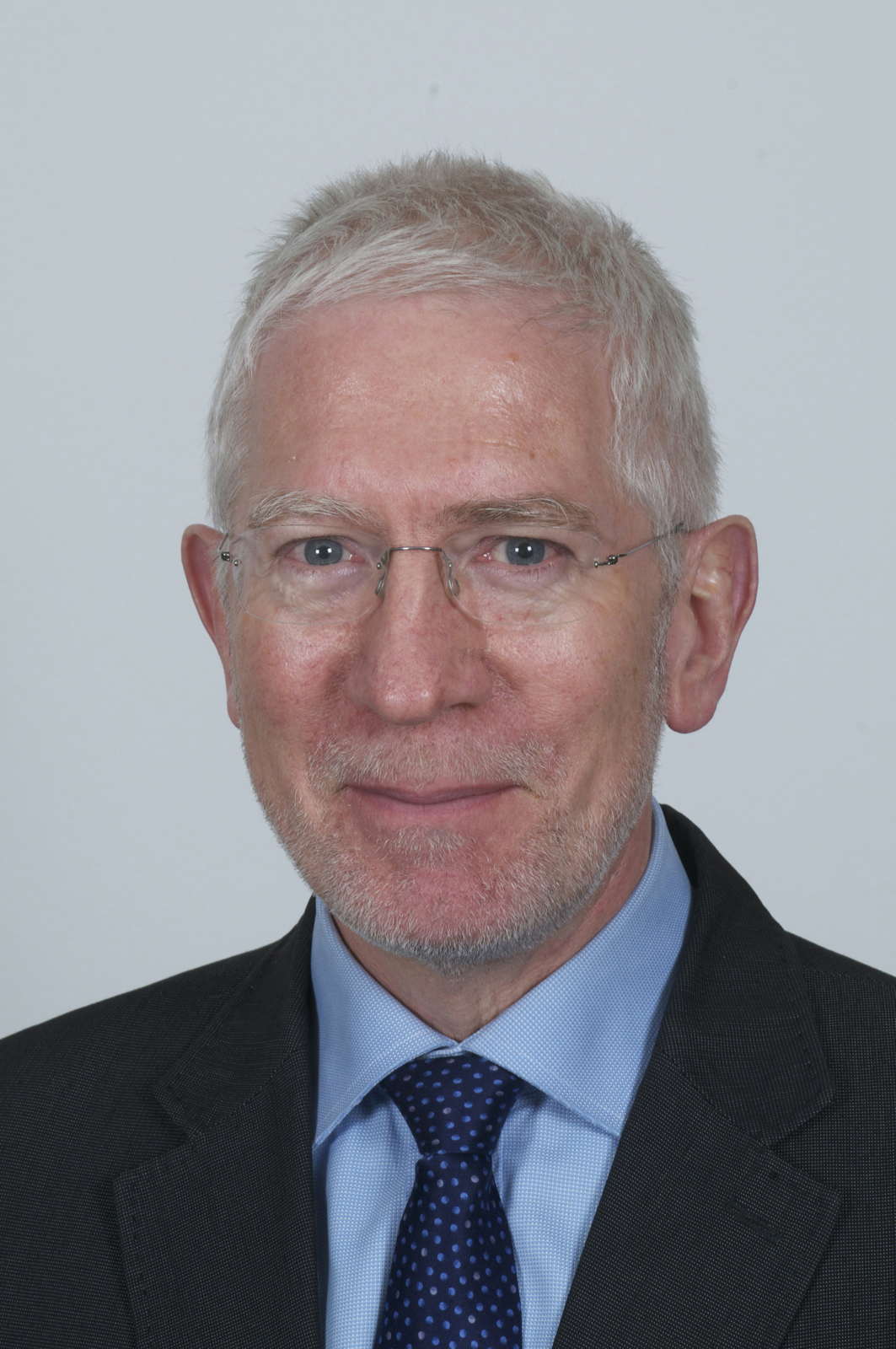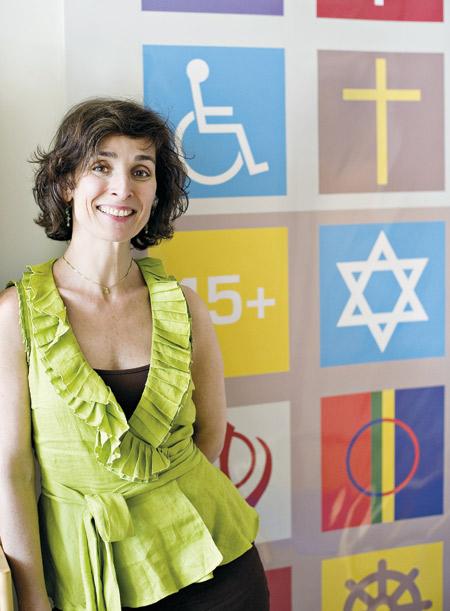New recruitment method - greater diversity
The Norwegian police academy has long sought to increase diversity among the student body and the future police force. Since 2012, they have been working systematically with recruitment to achieve this.
“Unstructured selection methods give less protection against discrimination and lead to subjective assessments. This may exclude various groups in society that our academy is very much interested in including,” says Sarah Abraham, Senior Adviser at the Norwegian Police University College (PHS), who works with diversity recruitment.
Wants to recruit the best
To ensure greater diversity among the student body and the future police force, the police academy is seeking to recruit ethnic minority students, such as immigrants, Norwegian-born persons with an immigrant background, national minorities and indigenous people.
“Our long-term goal has been to increase the number of ethnic minority students, and we are working with this by using various recruitment measures,” explains Abraham.
The Police’s definition of diversity includes ethnicity, gender, sexual orientation and age, in addition to a desire to recruit candidates from throughout the entire country.
“We have had several measures that target the immigrant population, and we also take part every year in the Oslo Pride Parade, a festival for the LGBT community (editor’s note: lesbian, gay, bisexual and transsexual persons). Almost 40 percent of the students are women, which we are very pleased about,” she says.
The academy wants to recruit the best qualified candidates for its police education. This requires an extensive selection process which begins with an assessment of whether the applicants meet the formal requirements, pass medical exams and have a certificate of good conduct. Applicants who fulfil these requirements will then be called in for physical tests.
“Applicants who pass these tests meet with one of our four admission committees, and are assessed for their personal suitability for the educational programme and the profession.”
“Must ensure the most objective assessment possible”
The assessment of personal suitability is the final phase of the admission process. Since the admission in 2012, the assessment of personal suitability has been based on six main competencies, which are essential for being a student at the academy and for working as a police officer in the future (see the fact box).
The applicants are measured on these six desired competencies using structured methods such as skills, personality and linguistic tests, group exercises and interviews.
“These methods together form an ‘assessment centre’, which better prepare us to counteract the usual pitfalls and random discrimination found in more traditional, unstructured recruitment and interview methods,” explains Abraham.
The idea behind this is to ensure that applicants undergo the most objective assessment possible in relation to the six competencies.
“Research shows that unstructured interview methods entail a risk of subjective assessments of applicants because the method is more susceptible to bias than a competency-based interview or another type of structured interview,” says Abraham.
Supported by research
The objective to increase the recruitment of ethnic minority students comes in the wake of the recommendations in the National Police Directorate’s report on the police force up to the year 2020. As the report points out, the Norwegian police lack competence in diversity and cultural understanding and need to establish a presence based on trust in a diverse society.
Abraham refers to a Dutch study that looked at the assessment of applicants to the Dutch police academy. The study shows that assessing a candidate’s personal suitability may be especially difficult when he or she has an immigrant background.
“The Dutch assessment committees rely more on their ‘gut feeling’ and use more subjective, irrelevant grounds when assessing these candidates compared with ethnic Dutch candidates. Studies like this have been important for the academy in its work to change its own selection systems.”
In addition, meta-studies have shown that assessments based on unstructured interviews may more often put applicants with a minority background at a disadvantage than when the interviews are structured.
“Ever since we went over to the structured methods, we have noticed a clear increase in the number of ethnic minority students, both women and men, and the number of women in general,” says Abraham.

The value of a good job analysis
“The transition to structured methods gives us a good idea of who is suited for the police profession. This is something that every organization can do: define what they believe constitutes personal suitability for the role or profession in question, and then find effective measurement tools that can give reliable results,” she says.
In order for this process to work as it should, it is important that it is based on recognized, effective selection methods and that it maintains a high professional standard.
“We are an organization that is highly dependent on the people’s trust. The police academy has chosen a method in which an admission committee comprised of two police officers, a legal expert in police matters, and a representative from the higher education sector assesses the applicants’ suitability. For us this means we have a group of highly qualified professionals that we are responsible for training to master our selection methods,” says Abraham.
“This gives us certainty about the quality, and involves close follow-up of and cooperation with our admission committees.”
Must apply first
Abraham emphasizes that the suitability assessment mainly entails selecting the right applicants. Before that, the applicants must actually want to attend the police academy.
“Before using these methods, which should ensure that we are assessing the applicants in a fair and equal manner, the education we offer at the police academy must appeal to many different groups of young people, so that we are able to recruit from the diversity found in society. It doesn’t help to have a well-developed tool if we aren’t seen as an interesting educational option.”

Abraham thinks it is difficult to say what is appropriate at other educational institutions, but she believes that the academy’s methods may also be useful for ensuring diversity in other educational programmes and professions.
“Yes, absolutely! What must be done is to define suitability for various fields or professions with a thorough job and competency analysis, and then find effective measurement tools,” she says.
Not currently of interest for psychology
For several years the Department of Psychology at the University of Oslo has been discussing how to achieve better gender balance in the female-dominated field of psychology.
“Diversity and gender balance are important issues, but finding the right method and writing a proposal for measures has been difficult. This is why nothing has been done up until now,” says Kjetil Sundet, Chair of the Department of Psychology.
The Department of Psychology has now proposed a quota scheme to ensure that the student body is comprised of at least 30 percent of the underrepresented gender. A while ago the department also held its own men’s recruitment day to increase the number of male applicants to psychology studies. The hope is that these measures will result in more male applicants.

“So far the priority has been to improve the gender balance. We will continue with our campaigns to change people’s attitudes, and over time we want to delve more deeply into diversity.”
“The most concrete plan is to organize an event for minority students, similar to men’s recruitment day. In the best case, we can do this as early as the autumn. At that time we arrange a ‘psychology day’ targeted at pupils in upper secondary school.”
“What do you think about the police academy’s recruitment method? Is it something you could use as well?”
“It has not previously been of interest. I can’t rule out whether in the future we will propose using interviews to increase the recruitment of certain underrepresented groups,” says Sundet.
He adds that suitability assessments are also done in the professional study programmes, but they are conducted during the course of studies rather than prior to admission.
Sundet finds it problematic that the psychology students generally do not reflect the population as a whole. Like Abraham, he thinks it is important that the field is appealing to young people from all segments of society.
“Young women and men with a minority background who apply to higher education must first want to pursue professional studies in psychology. This is why we organize open days, to show what opportunities are available in the study programmes.”
“Here we can make an extra effort by designing a separate event targeted towards minorities in upper secondary school. We have several resource persons working with this now.”
Translated by Connie Stultz.
The police academy’s objective to increase the recruitment of ethnic minority students comes in the wake of the recommendations in the National Police Directorate’s report on the police force up to the year 2020 (Politiet mot 2020).
The report points out that the Norwegian police force lacks competence in diversity and cultural understanding and needs to establish a presence based on trust in a diverse society.
After the police academy began using structured methods, they have noticed a clear increase in the number of ethnic minority students, both women and men, and the number of women in general.
The academy’s assessment of personal suitability is based on six main competencies, which are essential for being a student at the academy and for working as a police officer in the future.
These are:
- Openness and inclusion: Shows respect for and curiosity about people’s differences and works actively to include others.
- Cooperation: Cooperates well with others. Shows empathy and good communication skills.
- Maturity: Appears confident and engaged, establishes trust and demonstrates self-control in demanding situations.
- Willingness to act: A structured, decisive person who takes responsibility, makes independent assessments and shows courage.
- Integrity: Ability to act in an unbiased manner in keeping with ethical guidelines; has a spotless reputation.
- Analytical ability: Shows the ability to learn and recognizes the core of a complex situation. Is thoughtful and makes rational assessments.


